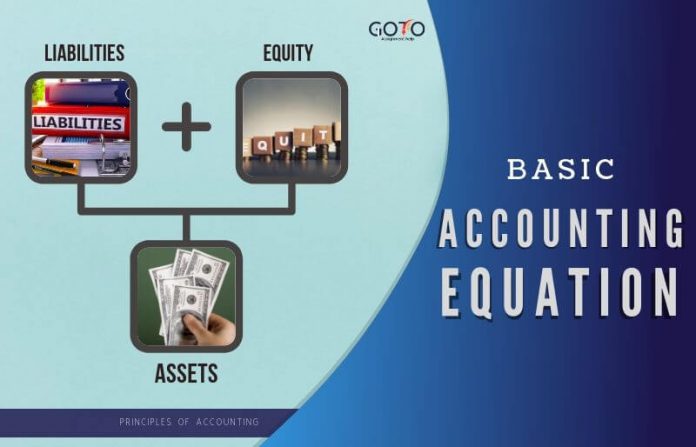
In this example, we will see how this accounting equation will transform once we consider the effects of transactions from the first month of Laura’s business. The accounting equation shows the amount of resources available to a business on the left side (Assets) and those who have a claim on those resources on the right side (Liabilities + Equity). When a company purchases goods or services from other companies on credit, a payable is recorded to show that the company promises to pay the other companies for their assets.
Purchase of Equipment in Cash

This is consistent with financial reporting where current assets and liabilities are always reported before long-term assets and liabilities. The accounting equation helps to assess whether the business transactions carried out by the company are being accurately reflected in its books and accounts. Shareholder Equity is equal to a business’s total assets minus its total liabilities. It can be found on a balance sheet and is one of the most important metrics for analysts to assess the financial health of a company.
Create a Free Account and Ask Any Financial Question
Before explaining what this means and why the accounting equation should always balance, let’s review the meaning of the terms assets, liabilities, and owners’ equity. As you can see, assets equal how much can an enrolled agent ea make in salary the sum of liabilities and owner’s equity. This makes sense when you think about it because liabilities and equity are essentially just sources of funding for companies to purchase assets.
Equity
For example, you can talk about a time you balanced the books for a friend or family member’s small business. The accounting equation focuses on your balance sheet, which is a historical summary of your company, what you own, and what you owe. Shareholders’ equity is the total value of the company expressed in dollars. Put another way, it is the amount that would remain if the company liquidated all of its assets and paid off all of its debts.
- Assets typically hold positive economic value and can be liquified (turned into cash) in the future.
- Thus, all of the company’s assets stem from either creditors or investors i.e. liabilities and equity.
- Refer to the chart of accounts illustrated in the previous section.
- Individual transactions which result in income and expenses being recorded will ultimately result in a profit or loss for the period.
- Still, you’ll likely see this equation pop up time and time again.
What is the approximate value of your cash savings and other investments?
The term capital includes the capital introduced by the business owner plus or minus any profits or losses made by the business. Profits retained in the business will increase capital and losses will decrease capital. The accounting equation will always balance because the dual aspect of accounting for income and expenses will result in equal increases or decreases to assets or liabilities.
Owners Equity (or Equity)
The cash (asset) of the business will increase by $5,000 as will the amount representing the investment from Anushka as the owner of the business (capital). Required Explain how each of the above transactions impact the accounting equation and illustrate the cumulative effect that they have. Transaction #3 results in an increase in one asset (Service Equipment) and a decrease in another asset (Cash).
The accounting equation is also called the basic accounting equation or the balance sheet equation. Liabilities refer to debts or obligations owed by the business. They are a particular amount owed to creditors of the business. Examples of liabilities include accounts payable, bank loans, and taxes.
The fundamental components of the accounting equation include the calculation of both company holdings and company debts; thus, it allows owners to gauge the total value of a firm’s assets. This equation holds true for all business activities and transactions. If assets increase, either liabilities or owner’s equity must increase to balance out the equation. The equation is generally written with liabilities appearing before owner’s equity because creditors usually have to be repaid before investors in a bankruptcy. In this sense, the liabilities are considered more current than the equity.
Merely placing an order for goods is not a recordable transaction because no exchange has taken place. In the coming sections, you will learn more about the different kinds of financial statements accountants generate for businesses. We know that every business holds some properties known as assets. The claims to the assets owned by a business entity are primarily divided into two types – the claims of creditors and the claims of owner of the business.
Refer to the chart of accounts illustrated in the previous section. Like any mathematical equation, the accounting equation can be rearranged and expressed in terms of liabilities or owner’s equity instead of assets. After six months, Speakers, Inc. is growing rapidly and needs to find a new place of business. Ted decides it makes the most financial sense for Speakers, Inc. to buy a building. Since Speakers, Inc. doesn’t have $500,000 in cash to pay for a building, it must take out a loan.



